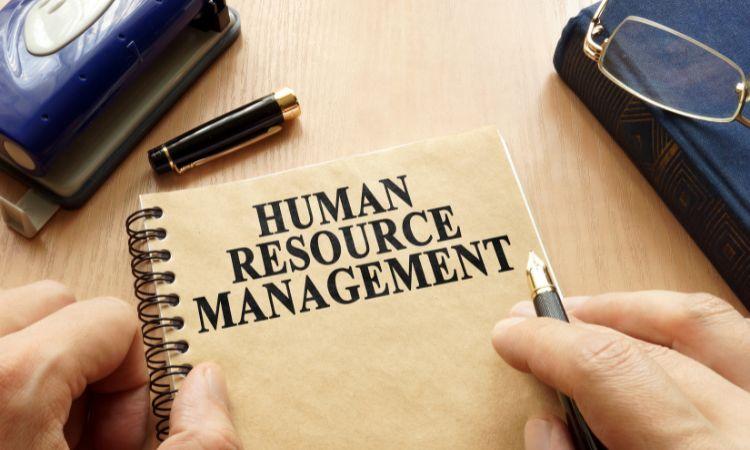Modern Human Resource Management Strategies Explained

In the ever-evolving world of work, the true power of any organization lies not in its products or services, but in its people. Human Resource Management (HRM) is no longer just an administrative function; it has become a strategic pillar in driving innovation, cultivating talent, and nurturing a thriving work culture. Whether it’s enhancing employee engagement, streamlining onboarding processes, or developing future leaders, HRM plays a pivotal role in shaping the success stories of today’s organizations.
Expert Market Research Insights on Human Resource Evolution
According to Expert Market Research, modern businesses are rapidly transforming their approach to workforce management, fueling growth in the Human Resource Management Market. There's a strong emphasis on data-driven HR strategies, reflecting a broader trend where HR departments are leveraging technology, psychological insights, and performance analytics to build more adaptive, productive, and inclusive workplaces. The rising demand for personalized employee experiences, improved retention strategies, and agile workforce planning has positioned the Human Resource Management Market as a key driver of business development and organizational resilience.
From Hiring to Retiring: The Journey Begins with HR
At its core, HRM is about managing people efficiently and effectively throughout the employee lifecycle. This journey begins with identifying the right talent, aligning them with suitable roles, and ensuring a seamless onboarding experience. But it doesn’t end there. HRM is responsible for guiding employees through professional growth, helping them overcome challenges, and ultimately facilitating a fulfilling exit or retirement when the time comes.
A forward-thinking HR strategy ensures that every phase—hiring, orientation, training, engagement, and exit—is optimized to keep both employee satisfaction and business performance in sync. When HR practices are in harmony with the company’s vision, it creates a ripple effect of motivation, accountability, and achievement across departments.
The Strategic Shift: HR as a Driver of Organizational Culture
In today’s competitive environment, companies that fail to prioritize culture often fall behind. Culture isn’t a static set of rules—it’s an evolving mindset shared by teams, and HR is the architect of this ecosystem. Through effective leadership training, transparent communication policies, and diversity & inclusion initiatives, HR helps build a culture of trust and belonging.
More importantly, a well-defined culture becomes a magnet for top-tier talent. People are drawn to workplaces that value growth, fairness, flexibility, and creativity. This is why HR professionals now work closely with top executives to shape a culture that resonates with both employees and business goals.
Technology Meets Empathy: The Digital Face of HRM
The integration of technology into HR has revolutionized how people are managed. With tools like AI-based recruiting platforms, employee engagement software, and performance analytics dashboards, HR managers can now make faster, more accurate decisions. But with all these digital upgrades, the essence of HRM still lies in human connection.
What makes modern HRM fascinating is the blend of tech and empathy—using automation to improve processes while staying connected to the emotional and psychological needs of the workforce. From virtual wellness sessions to real-time feedback systems, HR is becoming more responsive, proactive, and people-centric than ever before.
Upskilling, Reskilling, and Lifelong Learning: HR’s New Mission
The pace of change in the workplace is relentless. New tools, technologies, and practices emerge constantly, and employees must adapt quickly to remain relevant. Here’s where HRM plays a critical role: designing learning and development programs that not only enhance current skills but also prepare individuals for future roles.
Whether through mentoring, e-learning modules, certification programs, or cross-functional training, HR fosters a culture of continuous learning. In doing so, it boosts employee morale, reduces turnover, and builds a more resilient workforce capable of navigating change confidently.
Compliance, Ethics, and Responsibility: The HR Balancing Act
Behind the scenes, HR professionals are guardians of compliance and ethical practice. From maintaining fair labor standards to managing grievances and ensuring workplace safety, HRM involves a delicate balance of legal acumen and moral responsibility. These responsibilities are often underappreciated but vital for safeguarding both the employee and the organization.
By developing strong policies, conducting regular training sessions, and enforcing codes of conduct, HR helps build a workplace that is not only productive but also principled and secure.
Employee Engagement: More Than Just Satisfaction
Employee engagement is not just about offering perks or organizing team-building games. It’s about creating meaningful work experiences. HRM professionals achieve this by understanding employee motivations, recognizing achievements, and promoting a healthy work-life balance.
An engaged employee is more productive, more loyal, and more likely to contribute positively to the company’s objectives. HRM fuels this engagement through regular feedback mechanisms, transparent communication, and opportunities for personal and professional growth.
Performance Management: A Continuous Conversation
Gone are the days when performance reviews happened once a year. Today’s workforce craves feedback, guidance, and encouragement in real-time. HRM now focuses on continuous performance management, where goals are revisited, achievements are acknowledged, and challenges are addressed frequently.
By using performance tracking tools and open dialogue, HR ensures that employees feel supported and empowered to reach their full potential. This also helps managers identify high-potential employees and design personalized growth paths for them.
HRM as the Lifeline of Business Success
Human Resource Management is not a department—it’s a dynamic force that touches every aspect of a business. From attracting the right talent to building a thriving workplace culture, and from driving innovation to managing change, HRM is essential to organizational growth. As the world of work continues to evolve, so too will the strategies, tools, and responsibilities of HR professionals. But one thing remains constant: people will always be the heartbeat of every organization, and HRM will always be the rhythm that keeps it strong.
- Vibnix Blog
- Politics
- News
- Liberia News
- Entertainment
- Technology
- Education
- Art
- Causes
- Crafts
- Dance
- Drinks
- Film
- Fitness
- Food
- Games
- Gardening
- Health
- Home
- Literature
- Music
- Networking
- Other
- Party
- Religion
- Shopping
- Sports
- Theater
- Wellness



